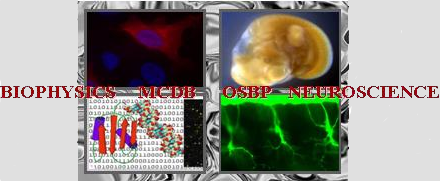Talk abstracts
Talk on Wednesday 03:30-03:45pm submitted by Jessica A. Herstine
Two years of efficacy: astrocyte-targeted gene replacement for vanishing white matter disease exposes uncorrected disease mechanisms
Jessica A. Herstine (Molecular, Cellular, and Developmental Biology Graduate Program), Tamara J. Stevenson, Julia Wentz (Department of Pediatrics, University of Utah), Sergiy Chornyy, Nettie Pyne, Abigail Biddle, Tatyana Vetter, Kevin Flanigan (Center for Gene Therapy, The Abigail Wexner Research Institute at Nationwide Childrens Hospital), Joshua L. Bonkowsky (Department of Pediatrics, University of Utah), Allison M. Bradbury (Center for Gene Therapy, The Abigail Wexner Research Institute at Nationwide Childrens Hospital)
Abstract:
Vanishing White Matter Disease (VWM) is a progressive childhood leukodystrophy presenting with ataxia, neurological decline, and seizures which lead to death.1,2 There are no approved treatments. Prior studies revealed that astrocytes are a critical therapeutic target.3,4 Caused by mutations in the subunits of eukaryotic initiation factor 2B (eIF2B), VWM most commonly originates from pathologic variants in EIF2B5.5 Due to VWM’s monogenic nature, it is a promising candidate for adeno-associated virus (AAV)-mediated gene replacement therapy. Baseline measurements in the Eif2b5 I98M murine model indicates significant mobility loss and demyelination all within a shortened life span. The integrated stress response—a pathway regulated by eIF2B—is also dysregulated, further supporting that these mice display severe VWM phenotypes.6 To provide targeted disease correction, we designed AAV-mediated gene replacement constructs to drive therapeutic EIF2B5 expression in astrocytes. Ongoing efficacy studies in two Eif2b5 VWM models—R191H and I98M—indicate that gene therapy delays disease progression and partially rescues motor function. Treated I98M survival is significantly extended (2-fold) with our longest extension exceeding 2 years of age. Even with this, our treated animals are still experiencing life-limiting seizures. By targeting astrocytes, we have a unique tool to assess uncorrected mechanisms such as the role of other cell types (microglia, oligodendrocytes, etc.) and pathways which we are now uncovering through single-cell RNA sequencing and spatial proteomics. Elucidating these mechanisms will allow us to adjust our therapeutic design to generate a more comprehensive and durable therapy. Overall, we anticipate the emergence of a lead gene therapy strengthened through the evaluation of molecular, cellular, and clinically relevant measures, allowing for translation to the clinic.
References:
1. Van Der Knaap, M. S. et al. A new leukoencephalopathy with vanishing white matter. Neurology 48, 845–855 (1997).
2. Hamilton, E. M. C. et al. Natural History of Vanishing White Matter. Ann. Neurol. 84, 274–288 (2018).
3. Bugiani, M., Vuong, C., Breur, M. & van der Knaap, M. S. Vanishing white matter: a leukodystrophy due to astrocytic dysfunction. Brain Pathol. 28, 408–421 (2018).
4. Dooves, S. et al. Astrocytes are central in the pathomechanisms of vanishing white matter. J. Clin. Invest. 126, 1512–1524 (2016).
5. Fogli, A. et al. The effect of genotype on the natural history of eIF2B-related leukodystrophies. Neurology 62, 1509–1517 (2004).
6. Herstine, JA. et al. Evaluation of safety and early efficacy of AAV gene therapy in mouse models of vanishing white matter disease. Mol Ther. 32(6):1701-1720 (2024).
Keywords: Gene Therapy, Vanishing White Matter Disease, Astrocytes
